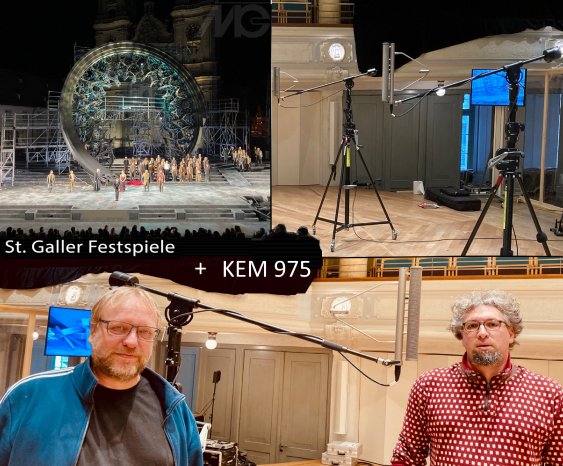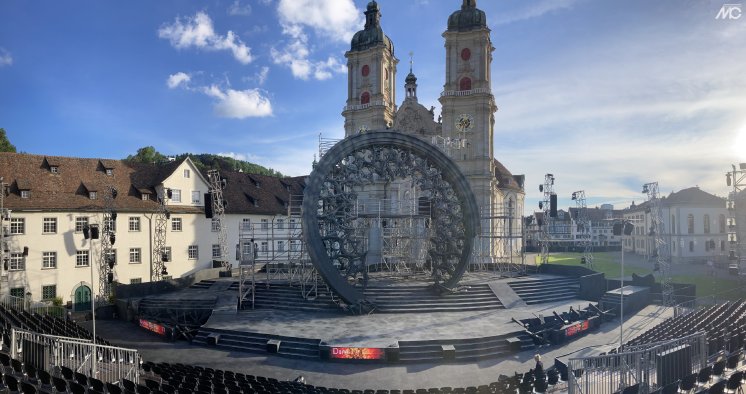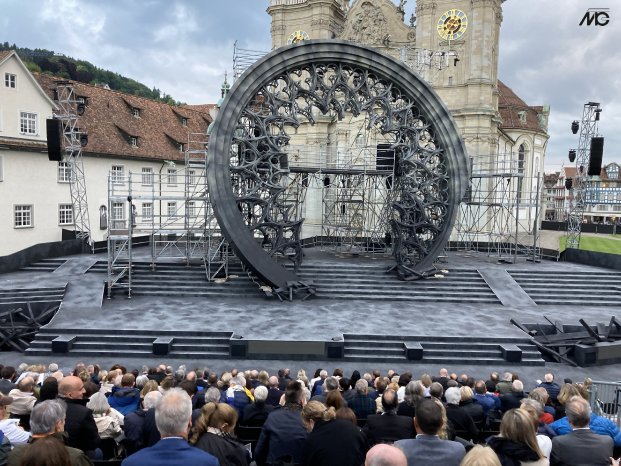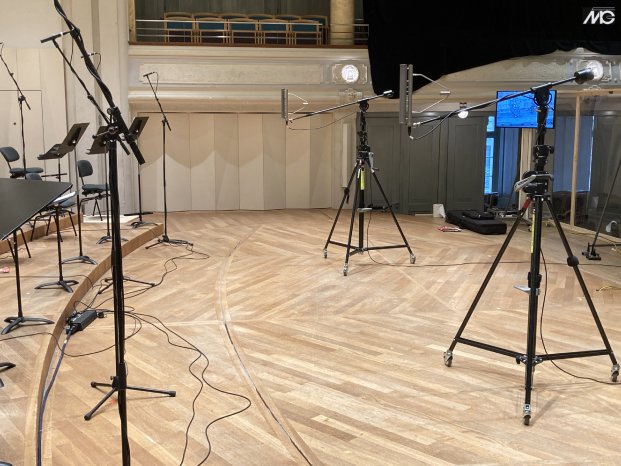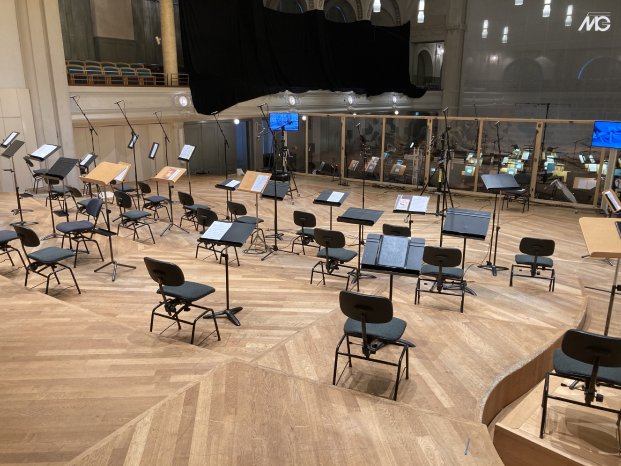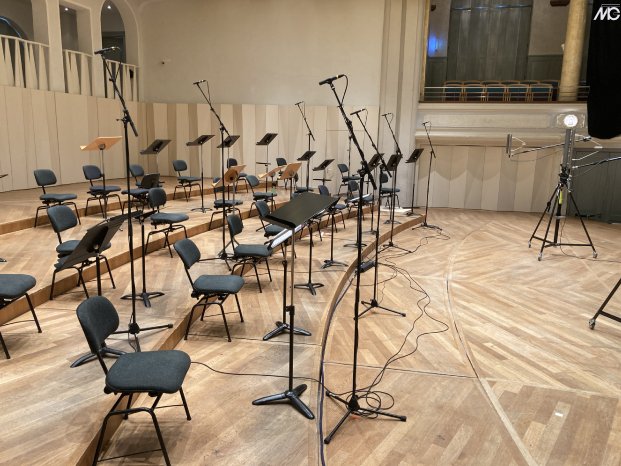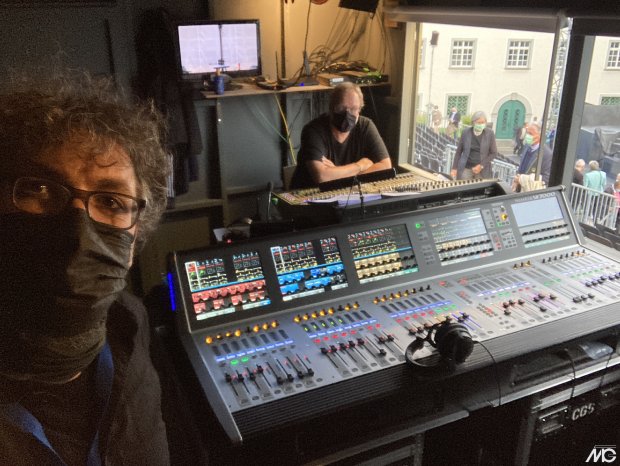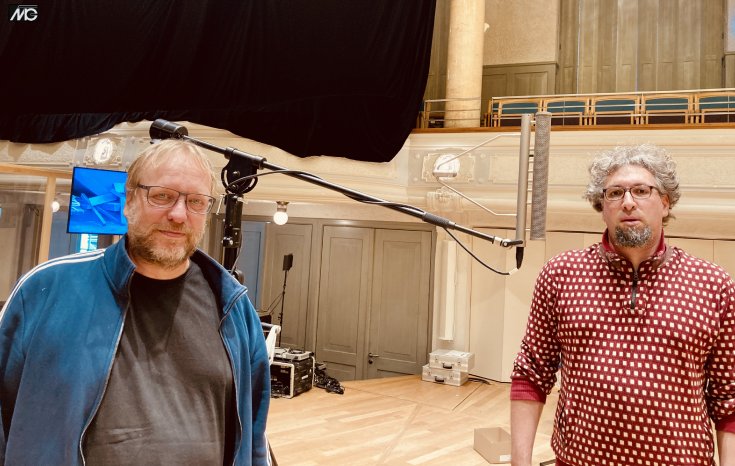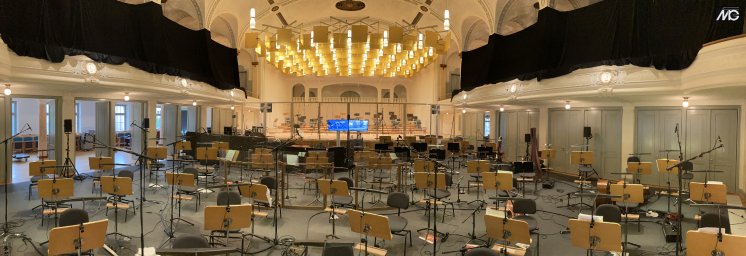The legendary St. Gallen Festival took place for the 16th time in the UNESCO World Heritage Site of the Abbey District of St. Gallen from 25 June to 9 July 2021.
The centrepiece of the festival was the large open-air opera production in the inner courtyard of St. Gallen Abbey.
The focus of this year's festival was the opera "Notre Dame" by the Austrian composer Franz Schmidt. With this new production, the Festival continued its tradition of rediscovering rarely performed masterpieces. The new production of the opera classic exuded a touch of Gothic, for the central stage element was the famous west rosette of Notre Dame, which was created around 1260 and is supposed to embody creative order.
An elaborate scaffolding structure, inspired by the images after the devastating fire of 2019 formed a flanking element.
Strict corona requirements posed a particular challenge to the sound engineering in 2021.
Michael Balke was the musical director and the symphony orchestra of the Theater St.Gallen played.
Sound performance and Sound Design under Corona Conditions
Responsible for sound and sound design were Stephan Linde (head of department of the Theatre St.Gallen) for the choir and soloists and Benjamin Schultz (freelance sound engineer/musician) for the orchestra.
Due to Corona strict requirements, this time the orchestra and Prague choir had to be transmitted from the Tonhalle in St Gallen, the theatre's concert hall, so to speak, via a three-kilometre fibre-optic line to the open-air venue in the Klosterhof.
Traditionally, the orchestra and the Prague Choir had an extra building in the immediate vicinity of the Klosterhof. This time, because of the distance rules, the Tonhalle was used for this purpose.
The difficulties that arose in the large concert hall were to keep the crosstalk to the respective main microphones for the orchestra and for the choir as low as possible. In open air productions there are different choirs. Traditionally the opera choir of the house and various additional choirs that sing live, unamplified in costume in the production.
The Prague Festival Choir, which also sings at the Bregenez Festival, was mixed in live, which traditionally works very well in terms of balance in the Klosterhof.
The first idea was to equip the Prague choir in the Tonhalle with headsets, but this idea was quickly abandoned due to the expense and the limited number of channels.
This time, with the support of Microtech Gefell, the Linearray cardioid-plane microphones KEM 975 were used.
Two KEM 975 now served as the choir's main microphones, plus spot microphones distributed according to voice groups.
The KEM 975s were exactly the right choice to prevent the reflections of the orchestra in the back of the microphones and to fade them out as far as possible.
The singers of the choir had to stand 2 m away from each other due to the corona distance rules.
The KEM 975s, with its 120 degrees in width, were thus ideally suited for this wide set-up of the choir and delivered an excellent result in terms of depth and transparency.
Tingo GmbH and Habbegger, who have been reliable partners of the Festival for many years, provided the Festival with the necessary audio infrastructure to enable the extremely long transmission paths and A/D conversions. The choice of the linear array microphones KEM 975 convinced Benjamin Schultz and Stephan Linde to work with these very special microphones and their extraordinary characteristics for future projects.
The cardioid plane microphone KEM 975 is a line array microphone system with a largely frequency-independent polar pattern, which – in the horizontal plane – has the features of a cardioid microphone and – in the vertical plane – the features of a directional microphone with an operating angle of approx. 30 degrees.
Thus, the polar pattern is adapted to the frequent case that the sound source to be captured is wide in space or moves around in it and, at the same time, sound coming from other directions is to be suppressed.
The sound to be rejected may consist of disturbing noises or reflections which come from the ceiling, table surfaces or floor areas. Due to its directional characteristics, the KEM 975 can be used for recording sound sources that are very extensive in width and depth for or moving sound sources. Since the complete signal processing is analogue, there are no signal delays.
Acoustic properties
The KME 975 has a directional distribution of sensitivity, which is not rotationally symmetric to the reference axis. The designation “cardioid plane microphone” results from this special directional distribution (flat cardioid). Regarding the polar pattern, the KEM 975 has – in the horizontal plane – the features of a cardioid microphone with an opening angle of 120 degrees and – in the vertical plane – the features of a directional microphone with an opening angle of 30 degrees.
Due to signal processing adjusted to the capsule positions, the vertical 30˚ opening angle remains constant above approx. 800 Hz over the whole upper frequency range.
The high directional selectivity of the microphone requires knowledge of the directions of incidence of useful sound and disturbing noise. The more carefully the KEM 975 is adjusted accordingly, the better the achieved results. The optimum adjustment is facilitated by an LED position indicator, which can be switched off and is attached inside the protective grille.
Eight high quality small-membrane condenser capsules of the M 300/ M 21 series with a gold-sputtered polyester membrane are used as the sound transducers. The amplitude-frequency response of the KEM 975 shows an increase of 2 dB between 2 kHz and 12 kHz to increase the speech and high-frequency intelligibility.
The optional Delta capsule, which can be plugged into the KEM 975, effects an increase of the directivity and directionality in the frequency range below approx. 800 Hz whereby the directivity index of the KEM 975 with attached Delta capsule has an almost constant frequency directivity of 9 dB even with lower frequencies down to below 100 Hz. The Delta capsule is automatically recognised by the KEM 975 and the signal processing is adjusted accordingly. Even if a delta capsule is plugged in, the complete signal processing remains analogue and thus latency-free.
If the KEM 975 is installed and aligned properly, sensitivity is reduced as the sound source comes closer to the microphone. The sound source with the longest distance is in the range of maximum sensitivity. As a sound source comes closer to the microphone, it leaves the area of maximum sensitivity. In this way, the level increase caused by approaching the sound source is compensated for. By careful positioning and angle setting, the intensity of this compensation can be varied.
